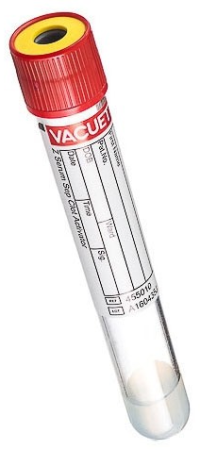
Test Code: 306
CPT Code(s): 82330
Includes: Ionized Calcium
Methodology: Ion Specific Electrode
Clinical Significance: The ionized calcium is determined by an ion selective electrode methodology. The result that is generated is pH adjusted. The result is empirically based on a measured pH of ionized calcium concentration normalized to a pH of 7.40. This calculation compensates for in-vitro changes in pH due to loss of CO2 through specimen handling. Ionized calcium represents the true “bioavailable” calcium in the circulation. In situations where the total calcium is normal but does not fir the clinical picture (e.g. hyperparathyroidism) a determination of the ionized calcium will, many times, show an elevation in the “bioavailable” calcium component. This may be due to alterations in protein concentrations, especially albumin, which binds most of the calcium in the circulation.
Alternative Name(s): Free Calcium; Ionized CA; CA++; CA, Ionized; Calcium; Calcium Free; Free CA; Ionized Calcium
Supply: #T157 Red/Yellow SST 8mL
Preferred Specimen: Serum
Preferred Volume: 2mL
Transport Container: Serum Separator Tube (SST) - Spun and UNOPENED
Transport Temperature: Room Temperature
Specimen Stability: Room Temperature: 1 Week
SPECIAL INSTRUCTIONS: Let clot and spin immediately with the cap on. DO NOT OPEN TUBE. Ship the UNOPENED gel barrier tube at room temperature. If submitting with any other assay, PLEASE SUBMIT A SEPARATE TUBE FOR THIS TEST.
Rejection Criteria:
- Received frozen
- Received opened or poured off
- Hemolysis
- What are hemolyzed specimens?
- Hemolysis occurs when the red cells are damaged during sample collection causing them to rupture. Hemolyzed serum or plasma is pale pink to red rather than the normal clear straw or pale-yellow color.
- What causes a specimen to be hemolyzed?
- Mixing tubes too vigorously
- Placing tubes in the refrigerator without allowing 30 minutes at room temperature for complete clotting
- Exposure to heat or in a refrigerator that is too cold
- Using a needle with too small of a bore necessary for the venipuncture
- Using too large a tube when using a butterfly needle
- Not allowing sufficient time for alcohol to dry on puncture site
- Leaving the tourniquet on for longer than one minute
- How can hemolyzed specimens be prevented?
- For routine collections, use a 20–22-gauge needle
- Do not remove the needle from the vein with the vacuum tube engaged
- Do not collect a specimen in a hematoma
- Do not centrifuge the specimen for a prolonged period of time
- Draw the sample gently and evenly
- What are hemolyzed specimens?
- Specimens exceeding stability
- Specimens other than serum
- Unlabeled or improperly labeled specimens
For additional supply or collection device information, please contact DLO's Customer Service at (800) 891-2917, option 2.
The CPT codes provided are based on AMA guidelines and are for informational purposes only. CPT coding is the sole responsibility of the billing party. Please direct any questions regarding coding to the Payor being billed.
